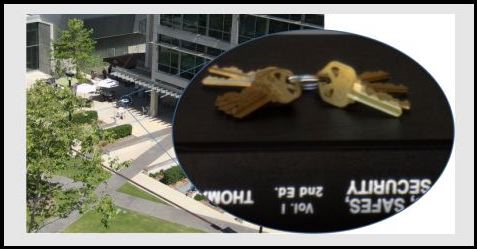
Back in 2008, Benjamin Laxton and Kai Wang at UCSD’s computer vision lab came up with SneaKey, a method to duplicate keys simply by imaging them. Reading the paper, SneaKey is a MatLab app that takes in an image of a key, along with certain control points identified by a human operator. The image of the key is then warped to a known configuration and the depth of the cuts on the key are estimated. They tested on sets of keys from two different manufactures, KwikSet and Schlage. While both could be decoded in a handful of attempts, the KwikSet keys were easier to guess, both in number of attempts and wider viewing angles. I would think it has to do with the handle part of the KwikSet keys having a large number of easy to identify control points, while the Schlage has comparatively fewer control points, but that’s just a guess. Schlage keys aren’t shown in the figures, so that’s just a guess. The authors do say that they believe that correct placement of the control points is critical to identifying the correct baseline in order to properly estimate the biting codes.